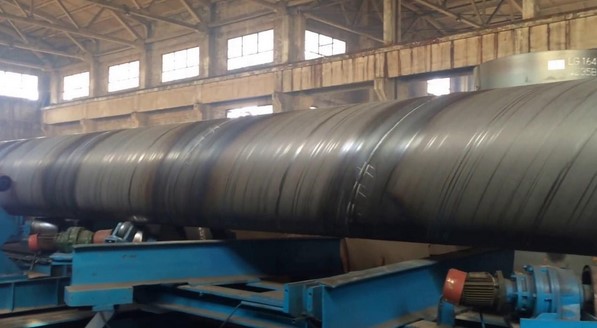Maintenance Excellence: Ensuring Smooth Operations in Industrial Settings is a comprehensive guide to the principles and practices of effective maintenance management. It provides an overview of the key concepts and techniques used to ensure that industrial operations run smoothly and efficiently. The book covers topics such as preventive maintenance, asset management, reliability engineering, and safety management. It also provides practical advice on how to develop and implement a successful maintenance program. With its clear and concise explanations, this book is an invaluable resource for anyone involved in industrial maintenance.
The Benefits of Implementing a Maintenance Excellence Program in Industrial Settings
Industrial settings are complex and dynamic environments that require a high level of maintenance to ensure optimal performance. Implementing a maintenance excellence program can provide a number of benefits to industrial settings, including improved safety, increased efficiency, and cost savings.
Safety is a primary concern in industrial settings, and a maintenance excellence program can help to reduce the risk of accidents and injuries. By establishing a comprehensive maintenance program, industrial settings can ensure that all equipment is regularly inspected and maintained to the highest standards. This can help to identify potential hazards before they become a problem, reducing the risk of accidents and injuries.
Efficiency is another key benefit of implementing a maintenance excellence program. By regularly inspecting and maintaining equipment, industrial settings can ensure that all equipment is functioning at its peak performance. This can help to reduce downtime and improve productivity, resulting in increased efficiency.
Finally, a maintenance excellence program can help to reduce costs. By regularly inspecting and maintaining equipment, industrial settings can identify potential problems before they become costly repairs. This can help to reduce the need for costly repairs and replacements, resulting in significant cost savings.
In conclusion, implementing a maintenance excellence program in industrial settings can provide a number of benefits, including improved safety, increased efficiency, and cost savings. By regularly inspecting and maintaining equipment, industrial settings can ensure that all equipment is functioning at its peak performance, reducing the risk of accidents and injuries, improving efficiency, and saving money.
How to Develop a Comprehensive Maintenance Excellence Plan for Industrial Settings
Introduction
Maintenance excellence is a critical component of any industrial setting. It is essential for ensuring the safety of personnel, the reliability of equipment, and the efficiency of operations. A comprehensive maintenance excellence plan is a set of strategies and processes that can be implemented to ensure that all maintenance activities are conducted in a safe, efficient, and cost-effective manner. This article will provide an overview of the key elements of a comprehensive maintenance excellence plan for industrial settings.
Planning
The first step in developing a comprehensive maintenance excellence plan is to create a detailed plan of action. This plan should include a timeline for implementation, a list of objectives, and a strategy for achieving those objectives. It should also include a budget for the plan and a list of resources that will be needed to implement it.
Safety
Safety is a critical component of any maintenance excellence plan. The plan should include a comprehensive safety program that outlines the safety protocols that must be followed in the workplace. This should include the use of personal protective equipment, the proper handling of hazardous materials, and the implementation of safety training for all personnel.
Equipment Maintenance
Equipment maintenance is an essential part of any maintenance excellence plan. The plan should include a detailed schedule for the maintenance of all equipment in the facility. This should include regular inspections, preventive maintenance, and repairs as needed. The plan should also include a system for tracking the maintenance of each piece of equipment.
Training
Training is an important part of any maintenance excellence plan. The plan should include a comprehensive training program for all personnel. This should include both classroom and on-the-job training. The training should cover topics such as safety protocols, equipment maintenance, and troubleshooting.
Documentation
Documentation is an essential part of any maintenance excellence plan. The plan should include a system for documenting all maintenance activities. This should include a log of all maintenance activities, a record of all repairs and replacements, and a system for tracking the performance of each piece of equipment.
Monitoring
Monitoring is an important part of any maintenance excellence plan. The plan should include a system for monitoring the performance of all personnel and equipment. This should include regular inspections and audits of the facility and its equipment.
Conclusion
A comprehensive maintenance excellence plan is essential for any industrial setting. It is a set of strategies and processes that can be implemented to ensure that all maintenance activities are conducted in a safe, efficient, and cost-effective manner. The plan should include a detailed plan of action, a comprehensive safety program, a detailed schedule for equipment maintenance, a comprehensive training program, a system for documenting all maintenance activities, and a system for monitoring the performance of all personnel and equipment. By implementing a comprehensive maintenance excellence plan, industrial settings can ensure the safety of personnel, the reliability of equipment, and the efficiency of operations.
Conclusion
In conclusion, Maintenance Excellence is an essential part of ensuring smooth operations in industrial settings. By implementing a comprehensive maintenance program, companies can reduce downtime, improve safety, and increase efficiency. Maintenance Excellence also helps to ensure that equipment is properly maintained and that any potential problems are identified and addressed quickly. By taking the time to invest in a comprehensive maintenance program, companies can ensure that their operations run smoothly and efficiently.



